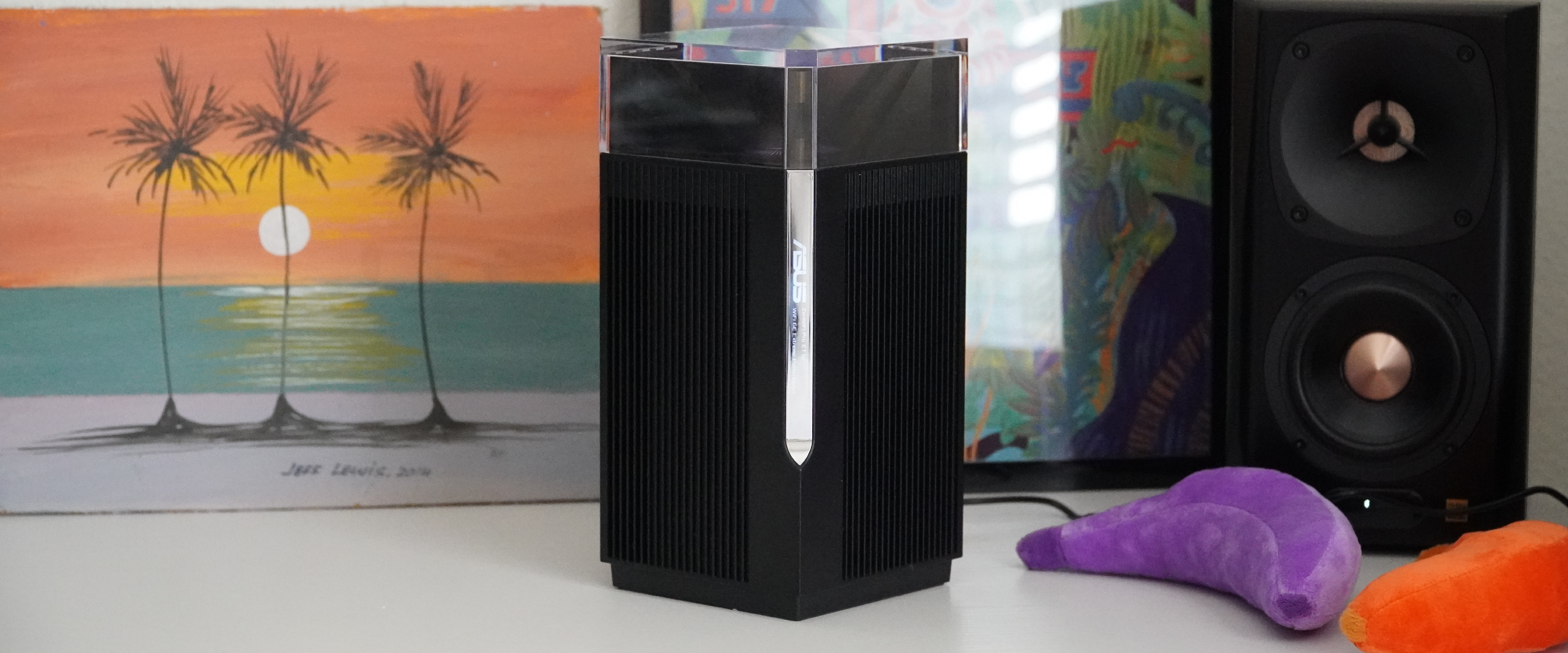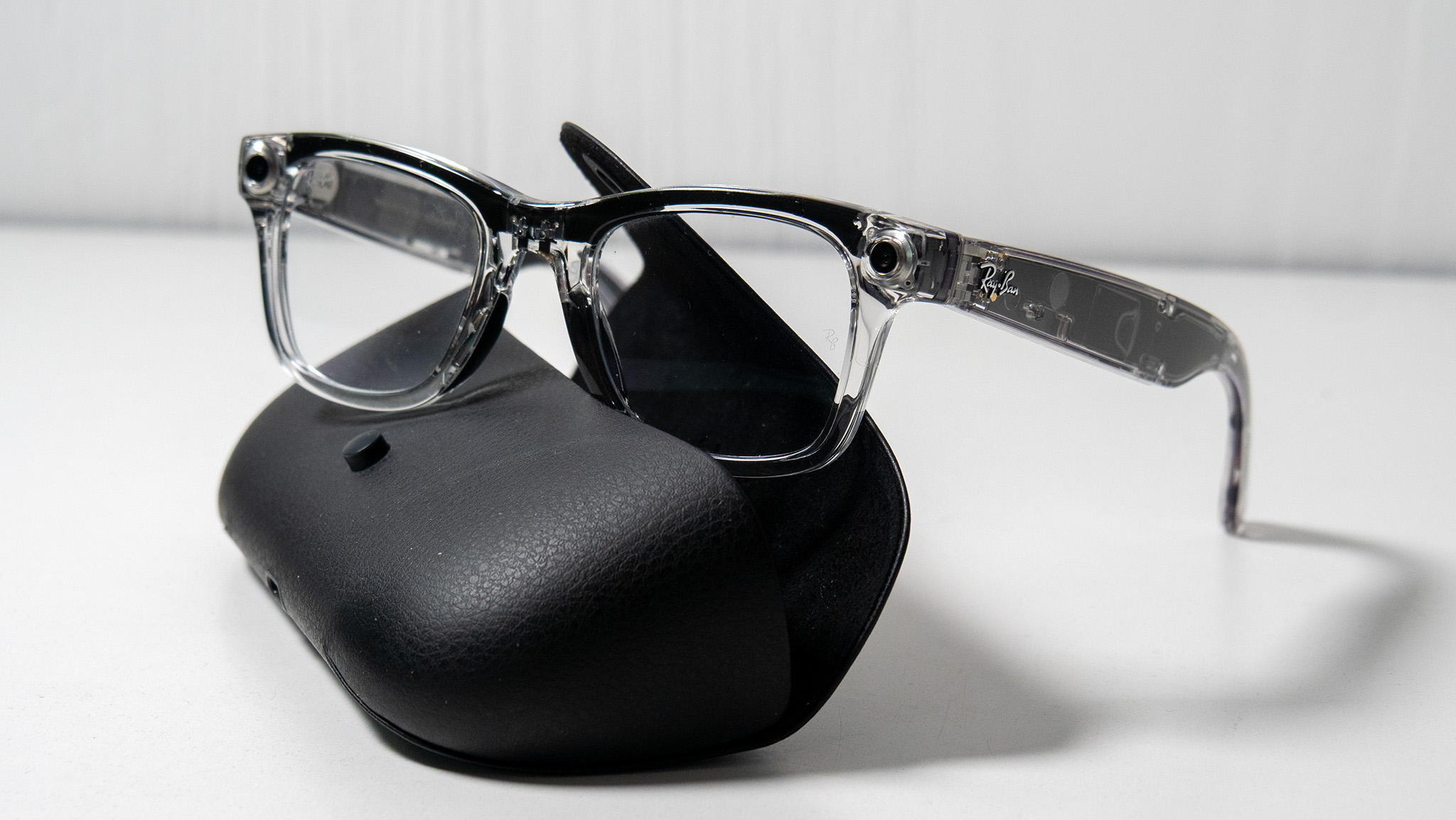Android Central Verdict
The ZenWiFi Pro ET12 is one of the best networking devices to come from the Taiwanese computer maker, with a striking design that confidently pushes itself right to the edge of tacky, without overdoing it. The specs justify the design with a fast tri-band AXE11000 connection, with 2.5Gbps WAN and LAN ports. The software is simple enough for newcomers, and powerful enough for the experienced.
Pros
- +
Fast AXE11000 connection
- +
Strong mesh coverage with two nodes
- +
Unparalleled AIMesh expansion options
- +
AiProtection software offers security and parental controls for parents
- +
Multi-gig ethernet is a great fit for a home NAS or gaming PC
Cons
- -
Nodes are a bit large
- -
It’s expensive
- -
Some odd 6GHz connection issues
Why you can trust Android Central
The ASUS ZenWiFi Pro ET12 is the fastest mesh Wi-Fi system ASUS makes, and one of only a handful of AXE11000 mesh options available. These nodes have a nice design that doesn't go overboard with lighting or mirrored surfaces, with the antennas visible in an acrylic box on the top of the node. I quite like the way these nodes look, and I was even more pleased to find that the performance lives up to the confident design.
If you were around for the introduction of 5GHz routers with what we called "Wireless N," you may remember that it was sold as a long-term solution to congestion on the more common 2.4GHz bands. That meant a bit less range due to the higher frequency having a harder time penetrating walls. Even so, the faster speeds made 5GHz worth it. Wi-Fi 6E with 6GHz is the same principle, but it asks users to give up even more coverage. This makes WI-Fi 6E and mesh systems a match made in heaven.
The ASUS ZenWiFi Pro ET12 can use either 5GHz, 6GHz, or ethernet as a backhaul for the mesh, so you can set it up in a way that makes the most sense for your home, or just leave it on auto and forget about it.
ASUS ZenWiFi Pro ET12 review: Price and availability
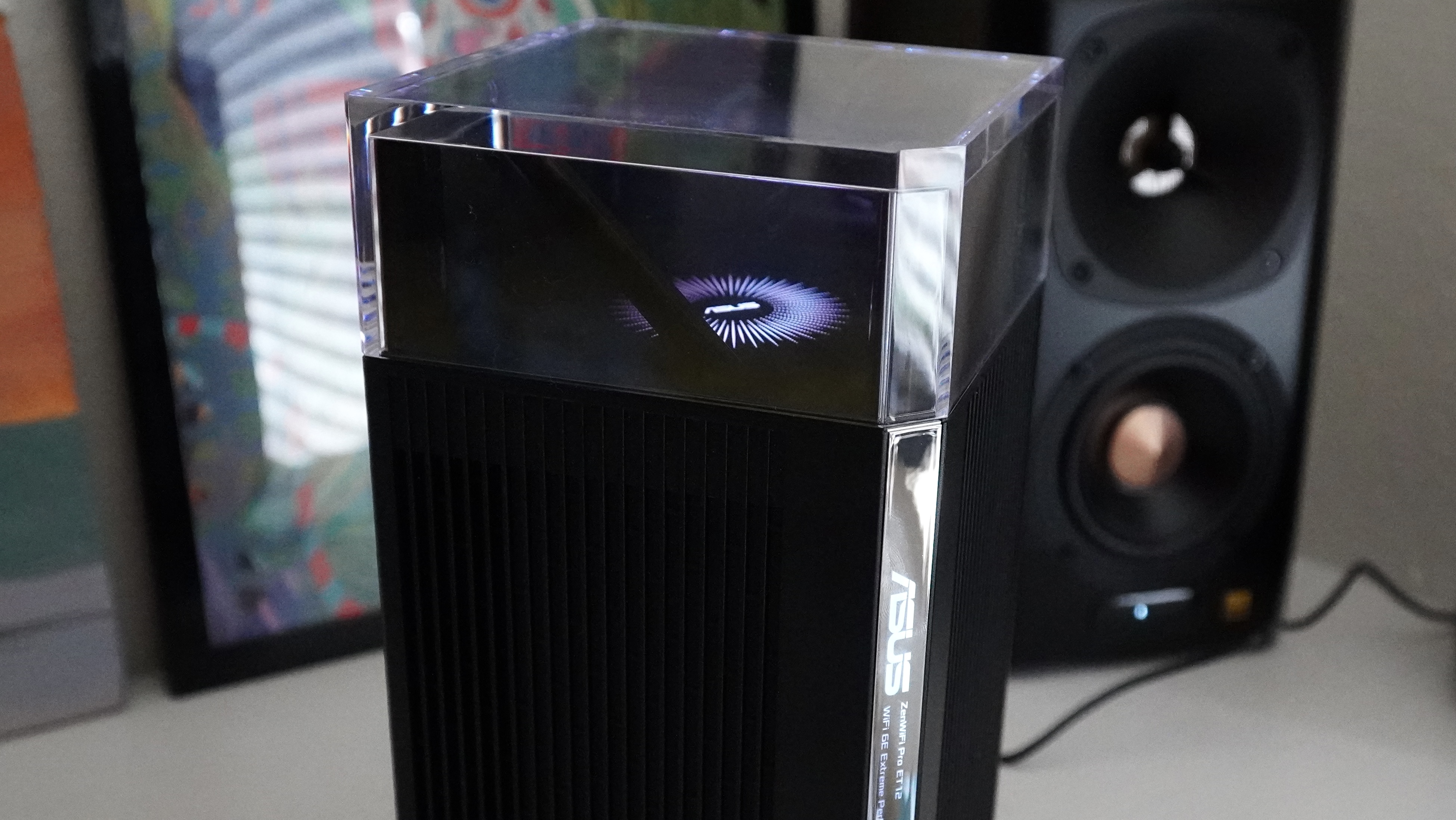
The ASUS ZenWiFi Pro ET12 comes in at $899.99 for a pair of nodes, with the box claiming an estimated coverage area of up to 6,000 square feet. The two nodes are identical, and a single node can be purchased for $479.99 from ASUS’ web store if you find you need a bit more coverage than the two provide. The two-pack is available from a wide range of retailers such as Amazon, Best Buy, Micro Center, B&H, and more.
One thing to keep in mind is that 6GHz isn’t available in every country, so availability will vary. ZenWiFi ET12 appears to be available in Europe, including the U.K. In North America, you can buy it in the U.S. and Canada.
This router is packaged mostly in cardboard with a bit of foam on the inside of the lid. This foam is easily removable so recycling should be easy in most regions. I would like to see more companies follow the example of eero in eliminating plastics from its packaging, but overall, it should be easy to dispose of ASUS’ packaging in an environmentally friendly way.
This router was tested on firmware 3.0.0.4.386_48823, which was the latest available update as of my testing in August of 2022.
ASUS ZenWiFi Pro ET12 review: Hardware overview
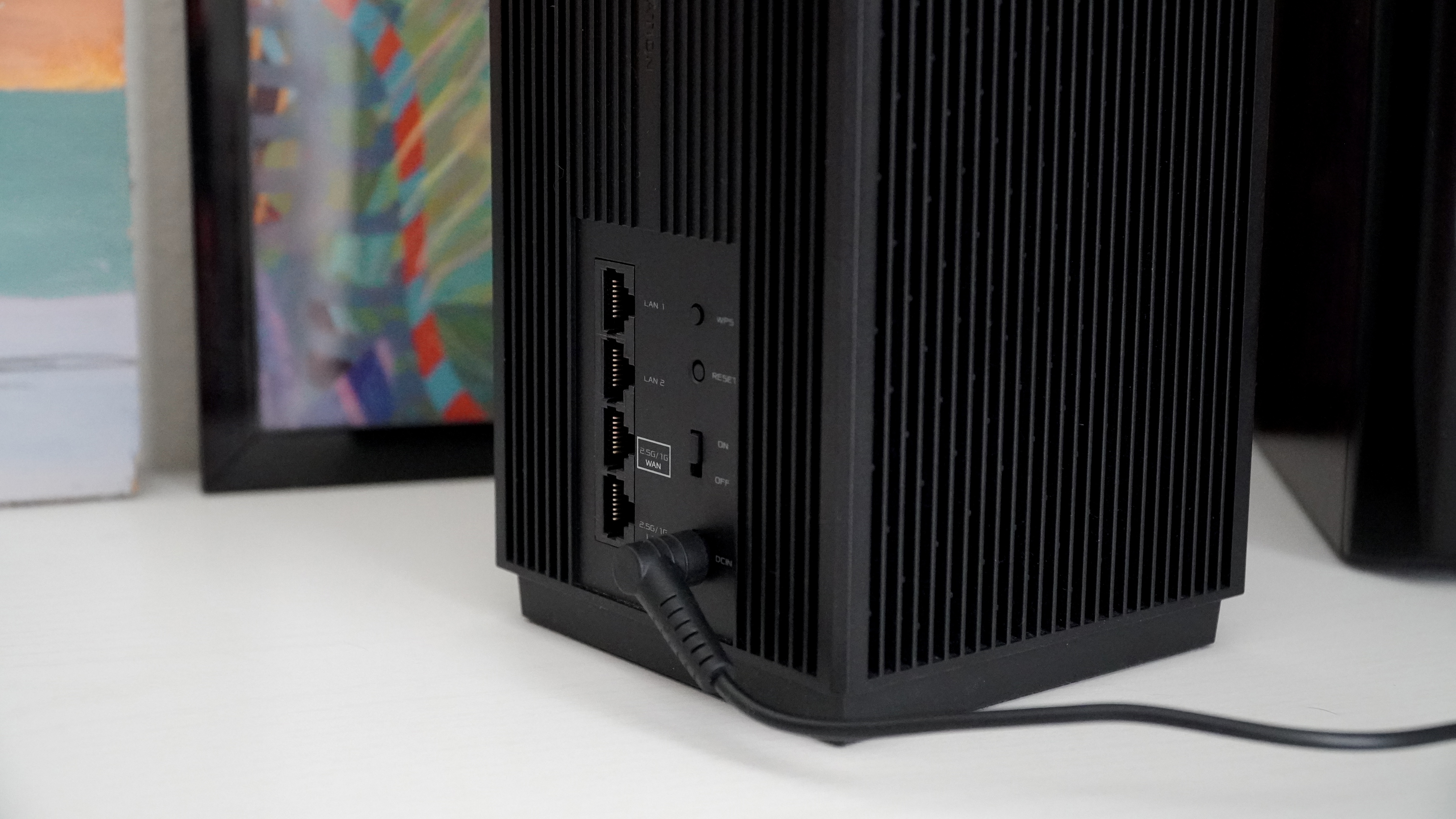
This mesh kit consists of two fairly large nodes at 4.5 inches wide and 9.5 inches tall. The top few inches is an acrylic housing for eight external antennas. Four antennas at the corners stand straight up, while the other four are at 45-degree angles. This should ensure good coverage in multi-story homes, as well as on the same level as the router itself. With 10 total antennas listed, it's safe to assume ASUS has put the 2.4GHz antennas inside the main housing.
In the center of these antennas is an LED-lit ASUS logo that reflects off the acrylic for a dazzling light display at night. Luckily, it’s not too bright as to be distracting, and if you’re bored of it, you can turn the LED off in the app.
Overall, I think this router looks and feels like a premium device, and one-ups the design of something like an eero Pro 6E and Orbi RBKE963. It may even pass the AmpliFi Alien, depending on how you feel about underglow lighting.
Around the back, you get three LAN Ethernet ports, with one capable of 2.5Gbps. The WAN port for the incoming network connection is also 2.5Gbps. This can be useful if you’ve got a fast wired network in your home already, or if you’ve got fast internet from an ISP that’s upgrading or about to upgrade in the near future. You could also use it to create a wired backhaul for your mesh.
Moving on to wireless, you get three bands with a combined speed of AXE11000. That breaks down to 4804Mbps at 6GHz, 4804Mbps at 5GHz, and 1148Mbps at 2.4GHz with 160MHz support on the faster bands. It’s worth keeping in mind that the fastest wireless device you’ll likely ever connect to this router will run at 2402Mbps in a 2x2 configuration.
Some Wi-Fi 6E devices may also be limited to 1201Mbps as is the case with an ASUS TUF gaming motherboard I was able to test the network with. To be fair, this is plenty of speed for just about anything, but worth keeping in mind if you need multi-gig speeds, or just want the best.
The 12 in the ET12’s name refers to the total number of streams in the system. That’s four for 5GHz, four for 6GHz, and four more for 2.4GHz. No matter what kind of devices you use, these nodes have a ton of capacity for devices. Just keep in mind that some of the 5GHz or 6GHz bands will need to be used to link the nodes depending on your home.
ASUS ZenWiFi Pro ET12 review: Performance

In the two weeks I spent with ZenWiFi Pro ET12, performance was nearly perfect. There was one issue where the Zenfone 8 I use to test 6GHz connectivity on all Wi-Fi 6E routers refused to stay connected to the 6GHz band on this router.
By default, this mesh is configured with the 2.4GHz and 5GHz bands under the same SSID with the 6GHz band as a separate SSID. In attempting to connect to 6GHz, the phone would report no internet connection and disconnect. A Windows 11 PC with a 2x2 Wi-Fi 6E card connected without issue.
This persisted for a few days while I waited to see if the router just needed time to optimize. With a quick Google search, some users suggested enabling and then disabling Smart Connect for the three bands. I don’t understand why, but this worked. After that, 6GHz worked without issue.
I left the backhaul selection on auto, and in my apartment, 6GHz was used to link the nodes. You can set a preference for 6GHz, 5GHz, or Ethernet from the app if you want. The 6GHz band operates at a lower power level due to regulation in my region, so for some people in a larger home or with thicker walls, 5GHz may deliver stronger results.
I tested this mesh Wi-Fi system on my gigabit Cox internet connection which indicates a maximum download speed of 940Mbps and upload speeds of 35Mbps.
| Row 0 - Cell 0 | Living room | TV rooom | Bathroom |
| Zenfone 8 | 921Mbps, 905Mbps | 844Mbps, 840Mbps | 486Mbps, 612Mbps |
On 6GHZ, speeds were generally high and in line with some of the best mesh systems I’ve tested in this location, such as the remarkable Orbi RKBE963 system. If you’re looking for 6GHz Wi-Fi to transform your Wi-Fi experience, it’s not so straightforward.
On 6GHz, routers need to use a lower power level than 5GHz. This means that things like walls are going to have a much more profound impact on speeds and connection quality. This is evident in how much the speeds fell off as I moved to the third location.
Wi-Fi 6E will be transformative in time as more devices come to rely on faster Wi-Fi, since 5GHz doesn’t have any more room to expand with additional channels beyond what it already has. As it stands, 6GHz will not replace the other bands and will be effective for indoor areas no more than one or two walls away from the router.
5GHz will fill in the rest of the house, and 2.4GHz will still be available for the widest coverage. There’s also the benefit that moving the devices that can use 6GHz to the new bands can free up some space on 5GHz.
This is still some time out, but with most of the best Android phones like Google’s Pixel phones and Samsung’s Galaxy S line now working with 6GHz, we’re well on the way. That being said, the ZenWiFi Pro ET12 has plenty of 5GHz speed to go around while we wait.
| Row 0 - Cell 0 | Living room | TV room | Bathroom |
| Zenfone 8 (160MHZ Wi-Fi 6) | 724Mbps, 811Mbps | 903Mbps, 886Mbps | 893Mbps, 891Mbps |
| Galaxy S20+ (80MHz Wi-Fi 6) | 761Mbps, 833Mbps | 787Mbps, 909Mbps | 807Mbps, 834Mbps |
| LG G8 (80MHz Wi-Fi 5) | 663Mbps, 623Mbps | 642Mbps, 573Mbps | 641Mbps, 600Mbps |
These speeds are solid and more than enough for just about anything you’ll do online. You should have no trouble streaming 4K HDR video, downloading large files like games, and even pulling data from a local NAS.
Things aren’t as perfect as they should be, as I noticed that upload speeds were inconsistent across tests. Running a few sporadic tests over a few days, upload speeds were sometimes quite alright. I’m not sure I can pin this on the ZenWiFi Pro ET12, but it's something worth noting.
Even so, this mesh system was very reliable overall, and I had no trouble using all of my devices on it, be it watching movies, browsing, or even downloading games.
ASUS ZenWiFi Pro ET12 review: Setup and software
Setup was quick and easy, as I am accustomed to with ASUS mesh systems. Simply follow the instructions in the ASUS Router app to get set up. One thing to keep in mind is that ASUS gives you a few more options than many other mesh systems, so if you go digging through the advanced settings, you can cause yourself a bit of trouble. If you’re not absolutely sure what you’re doing, you should probably stick to the Quick Internet Setup option.
I don’t want ASUS to ever take away these advanced settings. With so many mesh systems (and even standalone routers) simplifying their settings pages to the bare minimum, it’s lovely to see a Wi-Fi system like this that balances ease of use and its advanced settings so elegantly. I leave most of the settings on default, but I’m glad the options are there.
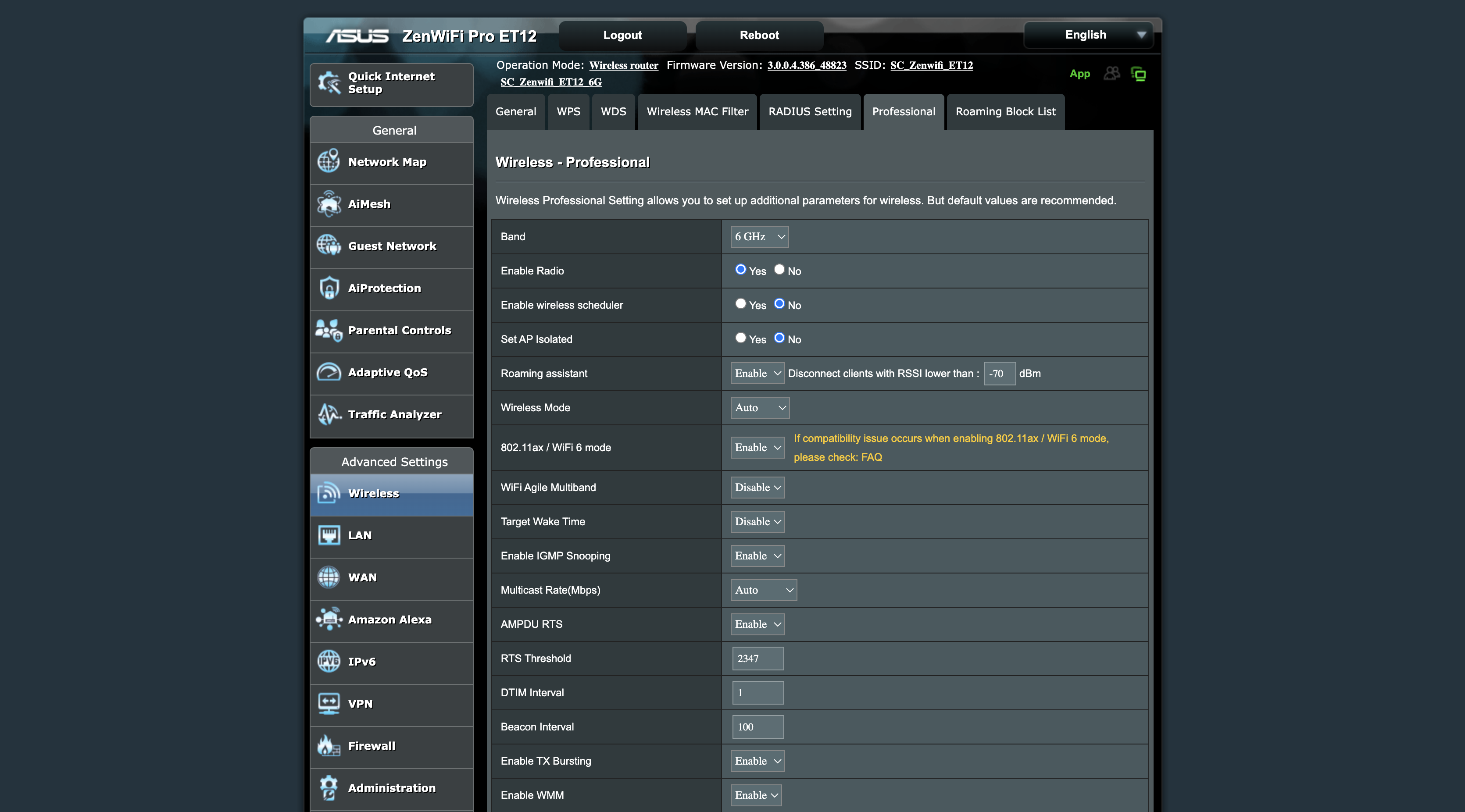
ASUS includes its AiProtection Pro software with security options powered by Trend Micro. You also get advanced parental controls with support for profiles so you can set schedules for each member of the house. You also get pre-made profiles for a preschooler, school-aged child, teen, and adult, so you can quickly control what type of content users can access.
There’s also a QoS option so you can tune your network to prioritize a certain type of connection. This can help keep your connection strong if, for example, you have a lot of streamers in the house but need to make sure your work meeting stays in high quality. This can also be essential for gamers that want to keep their ping times low and consistent while sharing their connection with the whole family.
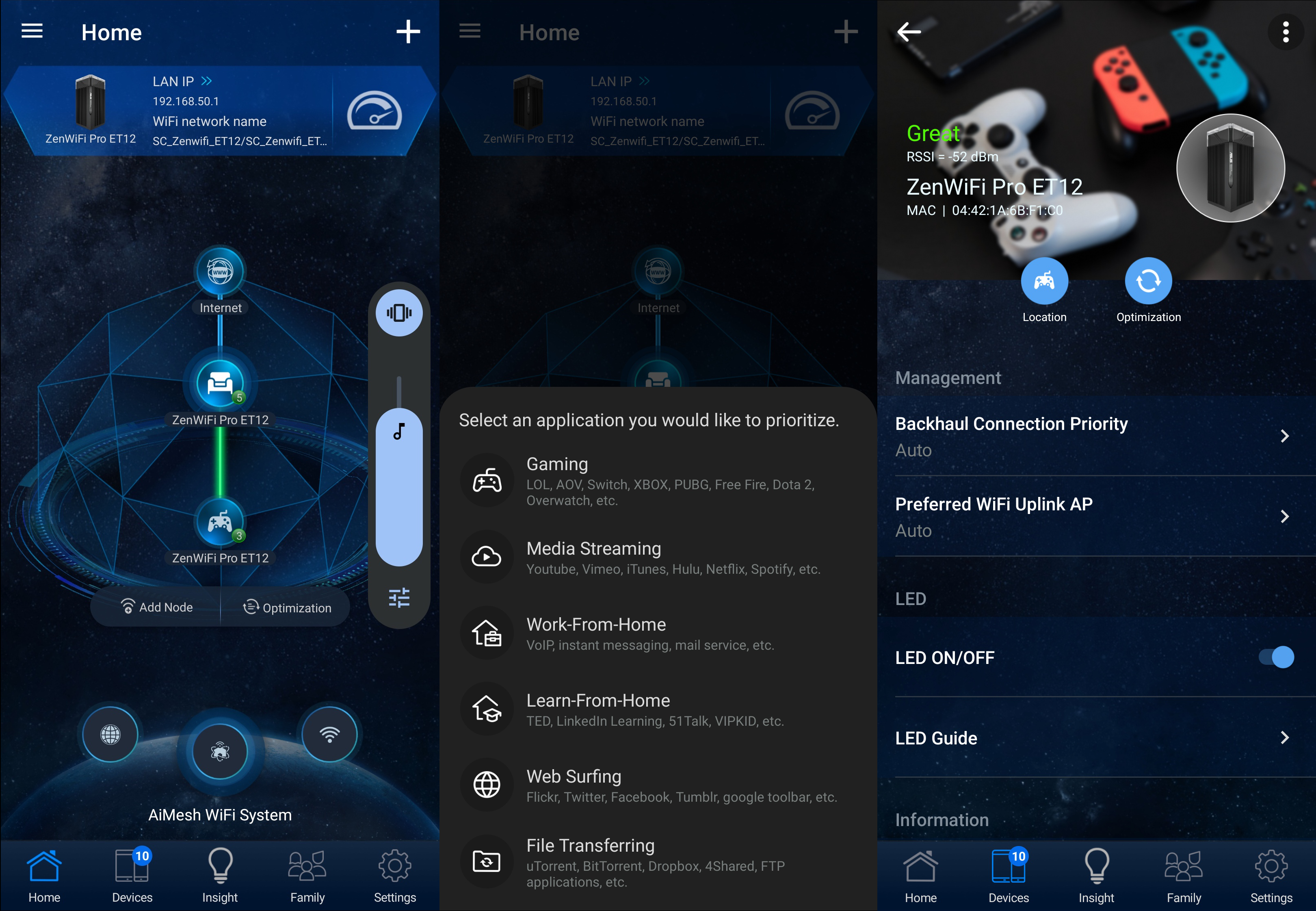
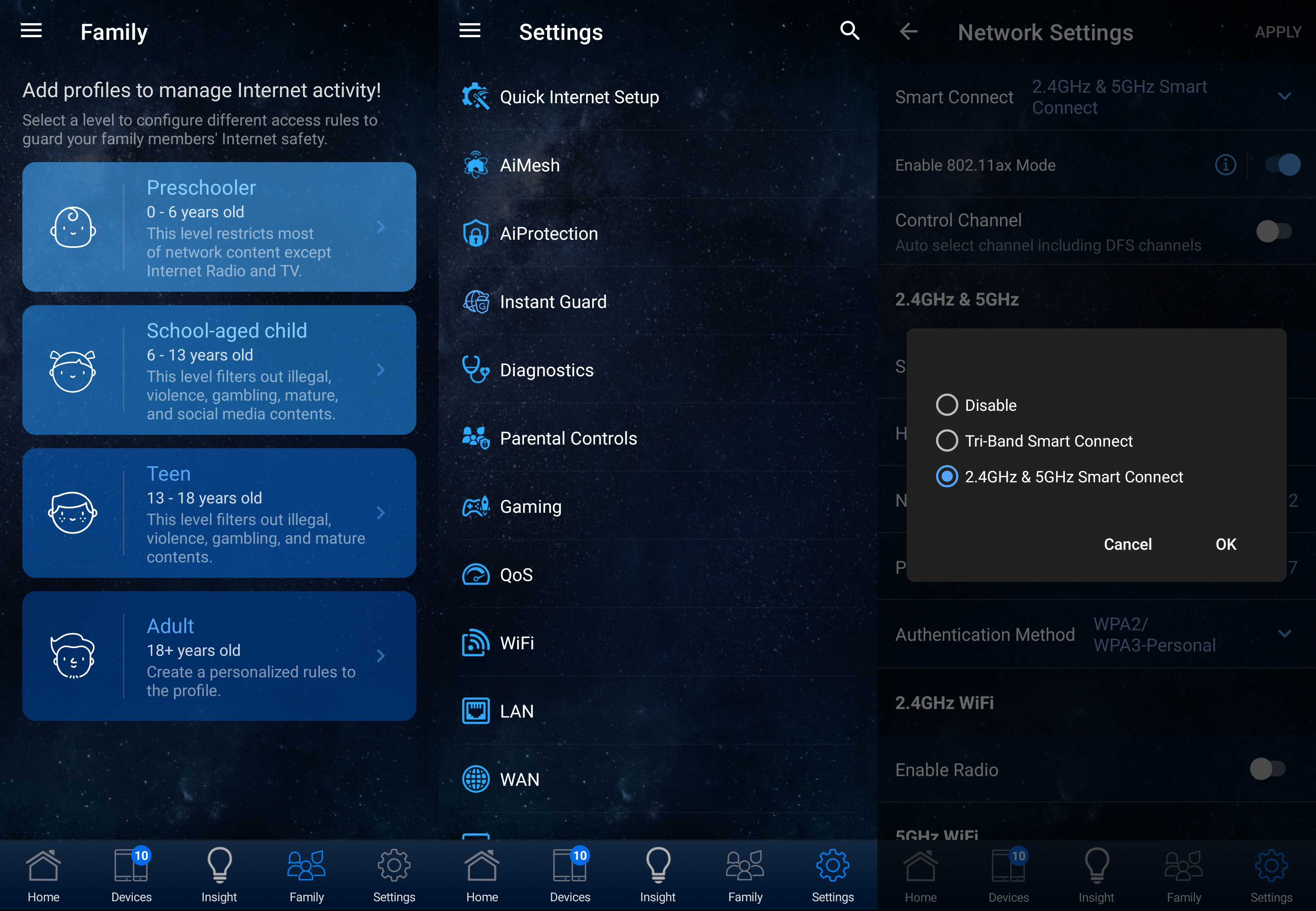
ASUS ZenWiFi Pro ET12 review: Expanding the mesh
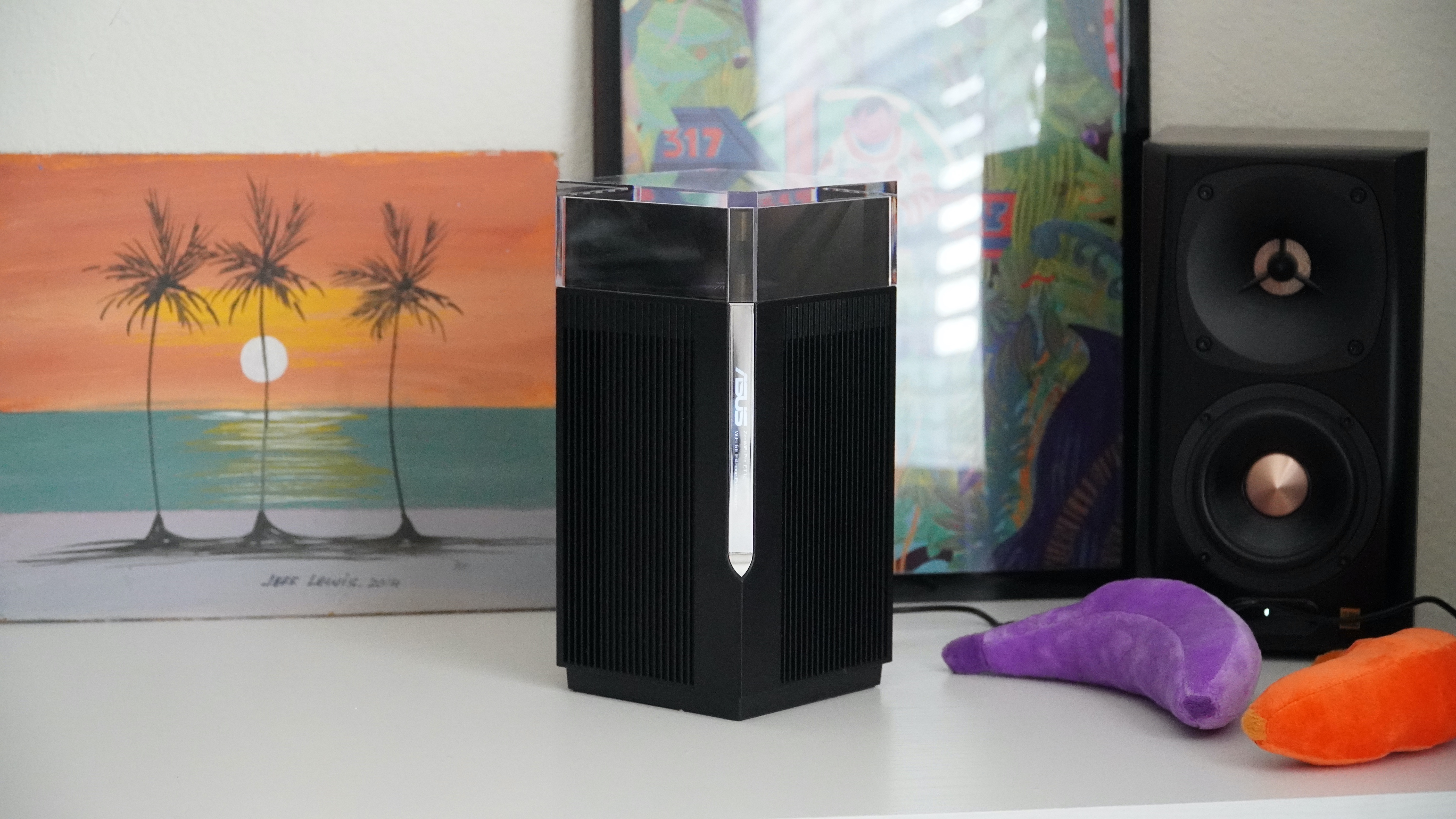
ASUS uses its AiMesh platform with both the ZenWiFi line and its standalone routers. That means you can build a mesh with almost any modern ASUS system.
If, for example, you already have a high-end router like the ROG Rapture GT-AXE11000, you can use the ZenWiFi Pro ET12 nodes to expand your coverage. You can also use some slower and more compact nodes like the ZenWiFi ET8 to expand your mesh without giving up 6GHz connectivity.
This flexibility makes it easy to build a whole home mesh with ASUS, though the freedom also means adding nodes can be a bit more troublesome. You’ll want to keep your fastest nodes at the core of your network, and you should keep in mind that while you can pair an older router with your ET12 system, doing so could impact your wireless performance in that area. For the most part, you want your nodes to have about the same performance as the core of your system.
ASUS ZenWiFi Pro ET12 review: What's not so good
As noted, there were some issues early on in my testing period with the Wi-Fi 6E connection on my Android 12-powered Zenfone 8. While a Windows 11 PC was able to connect, I had to jump through a couple of hoops to get it working as expected. This would be very frustrating if you had just spent quite a lot of money on this mesh system.
Speaking of the price, there simply aren’t too many home users that need to spend this much money on a Wi-Fi solution. It can be tempting to go all out on a Wi-Fi system like this, but with so much speed available on cheaper systems, it can be hard to recommend spending this much money on a two-piece mesh kit.
Lastly, the upload speeds were a bit of a concern, and if I was a Twitch streamer, I wouldn’t be comfortable moving to a wireless connection. The speeds average out just fine, and I had not noticed the issue outside of my run of speed tests.
ASUS ZenWiFi Pro ET12 review: Competition

Netgear’s Orbi RBKE963 is the closest in terms of performance, and in many ways, it exceeds the ZenWiFi system. This mesh system has a quad-band Wi-Fi 6E setup with a 2.4GHz, 5GHz, and 6GHz band dedicated to connected devices with another 5GHz band for the backhaul.
This can make a lot of sense, as the 5GHz band will have better range, but it’s more susceptible to interference. In my Orbi RBKE963 review, speeds were generally excellent and coverage was equally reliable. That being said, the Orbi system is even more expensive than the ZenWiFi Pro ET12.
ASUS ZenWiFi ET8 backs things down to an AXE6600 connection with its 2.4GHz speeds halved to 574Mbps on the 2.4GHz band, 1201Mbps on the 5GHz bands, but keeps the 6GHz speeds maxed out with 4804Mbps. This system makes the most sense if you can place the nodes close enough to each other to use 6GHz for the backhaul.
Even with the speed cut, my ZenWiFi ET8 review found the speeds to be enough for just about anything most people do online. At around $530 for two nodes, they’re much more affordable as well.
Most Wi-Fi 6E routers turn the 6GHz speeds up to 11 without a second thought, but the Deco XE75 system uses its resources in moderation with 2402Mbps on the 6GHz band, 2404Mbps on the 5GHz band, and 574Mbps on the 2.4GHz band. As I saw in my Deco XE75 review, my speeds were great on both 5GHz and 6GHz. The most impressive thing is that this mesh kit comes in at under $300 and is more than powerful enough for most homes.
ASUS ZenWiFi Pro ET12 review: Should you buy it?
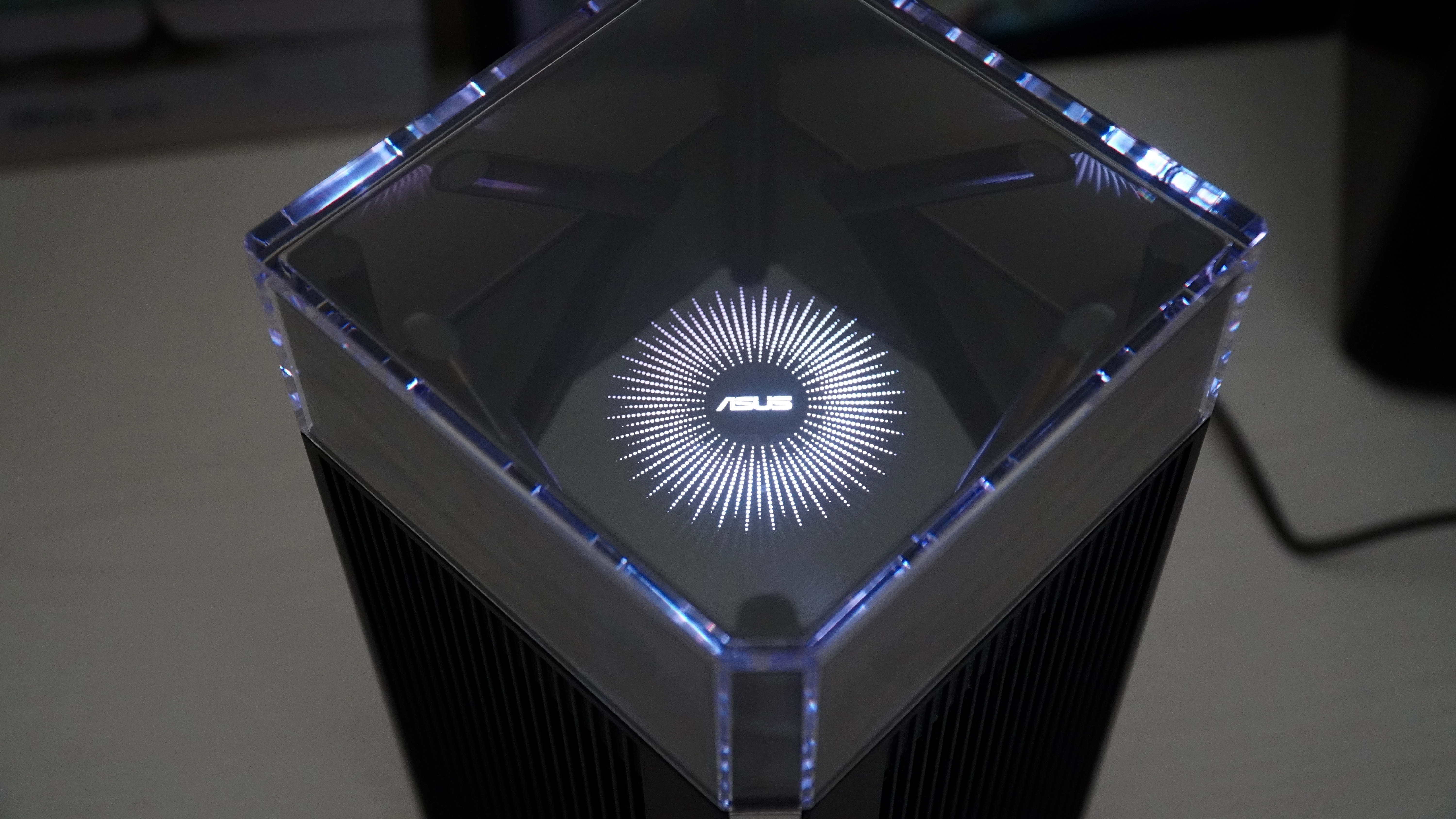
You should buy it if...
- You need one of the fastest mesh Wi-Fi systems you don’t have to build yourself.
- You need 2.5Gbps Ethernet ports on your nodes.
- You like ASUS’ open approach to advanced settings on a mesh kit.
- You want mesh expansion on a high-end ROG gaming router.
You shouldn't buy it if...
- You don’t have at least a gigabit connection.
- You only have 5GHz devices.
- You’re looking to save money.
When it comes down to it, the ZenWiFi Pro ET12 is one of the fastest Wi-Fi systems you can buy and there’s no getting around that. The thing is, most of us simply don’t need this kind of power in our homes.
This mesh kit is so fast that it feels like overkill even on a gigabit internet connection. It’s also quite expensive, and the price to performance scaling starts to plateau well below this price. This is still an easy pick as one of the best Wi-Fi 6E mesh systems you can get.
Still, if you’re OK with spending the money on this kit, you’ll probably be very happy with your speeds. You’ll also be ready for internet connection over 1Gbps which are starting to become more common on both Cable and Fiber connections.
I also love that you can change any setting you want if you connect through a web browser. With so many companies locking down their software to the absolute basics, a company respecting me enough to let me do whatever I want with the router I’ve bought is a breath of fresh air.
I also quite like the way these nodes look. With electronics becoming such a big part of our lives, I appreciate that ASUS is giving even its routers plenty of attention. While most of its competitors look iterative at best, the ZenWiFi Pro ET12 pushes the boundaries of industrial design. Sure, it’s only a mesh Wi-Fi kit, but at a penny shy of $900, you want to unbox something that feels special, and this does.
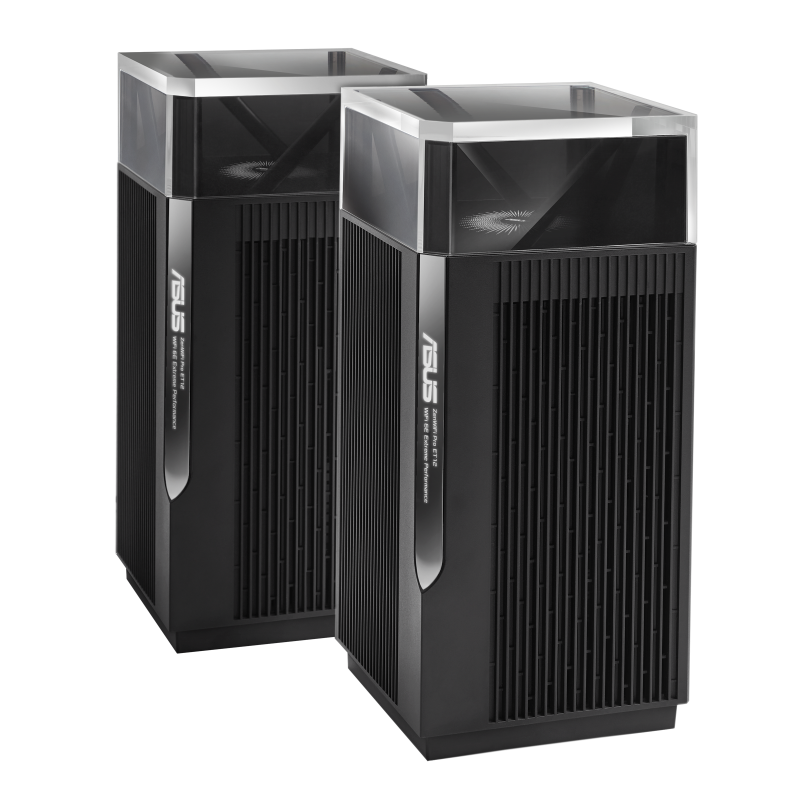
Tri-band Wi-Fi 6E performance
The ZenWiFi Pro ET12 is more than just a striking design, with plenty of tri-band Wi-Fi 6E performance with multi-gig Ethernet support. You also get a easy-to-use app for setup with the option for advanced settings in a browser.
When Samuel is not writing about networking or 5G at Android Central, he spends most of his time researching computer components and obsessing over what CPU goes into the ultimate Windows 98 computer. It's the Pentium 3.
